|
Mold around windows is a common problem in the Bucks Co. area. This is a mold removal in Bristol PA.,we were called out on. After we determined the type of mold and the cause, PDR re-mediated problem. Moving forward this homeowner will not have to worry about having any mold around windowsills in the future.
0 Comments
This was a recent job regarding mold clean up in Levittown PA. This was someone's basement that had a water leak.
This is a great article on mold and its effects on humans. If you are concerned about mold clean up in Philadelphia PA please feel free to call us with any questions.Mold in the home: How big a health problem is it?If you buy something through a link on this page, we may earn a small commission. How this works. Whether it is a cold, damp winter or a warm, humid summer, activities at home can result in moisture indoors and the appearance of mold. Mold can grow on walls, clothes, books, toys, and even CDs. It can turn prized possessions into musty relics that only look fit for the garbage. But is it also a health hazard? What effects can mold have on a person’s body? This article looks at what mold is, why it grows, its impact on a person’s health, and how to stop it. What is mold? Share on Pinterest Indoor mold growth is most likely to occur during the fall and winter months.Molds are a form of fungus. There are many different types, and they can occur both indoors and outdoors. Molds produce spores, which spread by floating around in the air. Mold spores are present in all indoor environments. There is no way to prevent spores, and they can persist in conditions where mold itself cannot grow. Mold spores thrive in environments that are moist and warm, so when they land on a damp spot, they begin to grow. Molds can grow on a variety of different surfaces, including fabric, paper, wood, glass, and plastic. As they grow, they may digest the material they are growing on. Types of moldNobody knows how many kinds of mold there are, but experts estimate that there may be 300,000 or more different types. Some are more likely than others to appear in the home. Common indoor molds include: Alternaria: This occurs in damp places indoors, such as showers or under leaky sinks. Aspergillus: This often grows indoors, on dust, powdery food items, and building materials, such as drywall. Cladosporium: This can grow in either cool or warm areas. It tends to appear on fabrics and wood surfaces. Penicillium: This tends to grow on materials with water damage. It often has a blue or green appearance. Molds take a variety of forms and textures. They can be white, black, yellow, blue, or green and often look like discoloration or stain to a surface. They can also have a velvety, fuzzy, or rough appearance, depending on the type of mold and where it is growing. MEDICAL NEWS TODAY NEWSLETTER Stay in the know. Get our free daily newsletterExpect in-depth, science-backed toplines of our best stories every day. Tap in and keep your curiosity satisfied. Enter your email SIGN UP NOWYour privacy is important to us How does mold get into a house? Share on Pinterest Mold can attach itself to pets.Mold spores are everywhere, both indoors and outdoors, but they are not visible to the naked eye. Spores can enter the home: Through the air: They can enter through open windows, doorways, and ventilation systems. By attaching to objects or people: Vehicles include clothing, shoes, and pets. Mold will only flourish if spores land somewhere that has the ideal conditions for growing, such as moisture and a supply of suitable nutrients. If the environment is unsuitable for the spores, they do not usually develop or cause a problem. Places where mold often appears include:
Examples include:
Mold and healthMold can pose a health problem, especially for people with an allergy, an existing respiratory problem, or a weakened immune system. Breathing problemsAs mold grows, spores, cells, fragments, and unstable organic compounds can enter the air. They can produce allergens, irritants, and mycotoxins. Some of these can be toxic, especially to individuals who have a sensitivity to them. Also, dampness encourages materials to break down, increasing the volume of particles, or dust, in the air. These particles can irritate the lungs, nose, and throat, especially in a person who already has a breathing problem, asthma, or a chronic lung condition. AllergyA person with a sensitivity or allergy to any mold-related particles may react. Mold allergies can produce similar symptoms to other allergies, such as hay fever, or seasonal allergy. In these, too, airborne substances can affect the upper respiratory tract. Symptoms include:
A higher volume of dust can increase the risk of dust mites, which can also trigger an allergic reaction in some people. AspergillosisSome types of mold, such as Aspergillus, can cause a serious health problem, known as aspergillosis, in some people. Most people can breathe in the spores of this fungus without becoming sick, but people who have a weakened immune system or an existing lung disease can have a severe reaction. There are different types of aspergillosis: Allergic bronchopulmonary aspergillosis (ABPA): This affects the lungs and can cause breathing problems. Allergic aspergillus sinusitis: This affects the nose and can involve a headache. Aspergilloma, or fungus ball: This can cause a cough, which may produce blood, as well as breathing problems. Chronic pulmonary aspergillosis: Symptoms include breathing problems, a cough, and weight loss. Other conditionsMold can also trigger the production of microbes and bacteria. Exposure to these bacteria may trigger an inflammatory response in some people, according to the World Health Organization (WHO). The WHO also note that mold and the microbial agents it produces may increase the risk of bronchial and fungal infections. There is some evidence that it might lead to:
Protection and preventionControlling moisture is the key to preventing mold from growing indoors. It is also important to keep the home clean and well ventilated. Causes of humidity in the home include:
Reducing humidityPeople can reduce the risk of a buildup of moisture and mold by:
Removing moldShare on Pinterest There are a number of commercial products available to help remove mold.To clean or remove mold: Wipe hard surfaces with a suitable commercial product, soap and water, or a heavily diluted bleach solution. Always dry the surfaces after use to prevent mold from reappearing. Wash or wipe porous surfaces and check regularly to see if mold has returned, as it can infiltrate these materials. If mold continues to reappear, consider disposing of these items. Ask at the local hardware store about antifungal paints and other products that can help prevent mold from developing. Call in a professional to tackle large areas of mold. See a doctor if you believe mold is causing a health problem. A range of items to help deal with mold are available for purchase online. These include: OutlookAll indoor environments have some mold spores in them, but this does not affect most people. However, people with a compromised immune system may have a higher risk of illness, and especially lung problems, if there are mold spores and mold in the environment. Others may experience allergic reactions. Keeping an indoor space clean, dry, and well ventilated is the best ways to prevent mold from developing. Anyone who has concerns about mold in the home, the workplace, or an educational or other setting should ask their healthcare provider or state health department for advice. Q: There is black mold growing on the back of the drapes in my rented apartment. Will it make me sick? A: In short, yes. Exposure to black mold can be harmful in the long term, particularly in people with respiratory conditions and other risk factors. Black mold can be one of several different species of fungus, including Stachybotrys chartarum. These molds are not dangerous in themselves, but they can release harmful toxins into the surrounding environment. Inhaling these toxins may lead to certain health effects and symptoms. It generally takes long term and consistent exposure to black mold for symptoms to develop. Short term exposure to black mold is unlikely to cause harm in healthy people. For more information about black mold, check out this article. Vincent J. Tavella, MPHAnswers represent the opinions of our medical experts. All content is strictly informational and should not be considered medical advice. 7 sources If your concerned about black mold in Philadelphia PA or mold testing in Philadelphia PA please call us. Credit for this article goes to Medical News Today This is how we do testing in Northeast Philadelphia PA. This also is a very informative article on mold testing from the epa. https://www.epa.gov/mold
This how we test regarding mold testing in Philadelphia PA
Here we did a job where water damage from a leaking roof in Huntingdon Valley, Pa., was discovered by a homeowner packing her things to move.
New and exciting stuff concerning Mold removal in Philadelphia. No matter what your concern is regarding mold in your home, we are here to help. If you need help with mold testing in Philadelphia PA or mold clean up in Philadelphia PA please call our 24 hr hot line.... We are here to answer all your questions and concerns.
How to Clean Mold:
Mistakes to avoid concerning mold removal Bensalem PA What you can’t see can hurt you: Learn what to use, and which materials are good candidates for DIY mold cleanup.Nobody wants mold. If you don’t know how to clean mold, trying to remove it on your own could make the problem worse and cause potential health hazards. But if you’re going to go the DIY route with mold cleanup, you at least want to do it right. Here are some of the most common mistakes to avoid when removing mold. Don't use bleach for mold cleanup Does bleach kill mold? This is a widely believed myth. We get so many customers inquiring about why the bleach treatment didn't work and their mold came back. Bleach will change the color of your mold to a clear and/or white shade (just as it does to your clothing). Unfortunately, all you have done is to create an environment for the mold’s continued growth. You also may have possibly ingested bleach fumes and airborne mold spores (which is not a healthy thing to do). Usually, within three to four months of bleaching, the mold will return — and do so with a vengeance. What DIY mold cleaning products to use instead The only cleanser that Comprehensive Mold Management recommends is borax, a white powder you can purchase at most groceries in the laundry/detergent section. For cleaning mold, mix, one cup of borax with 1 gallon of hot water. Apply the borax solution to the area with mold. Do not apply the solution to a porous material, such as drywall. These types of surfaces absorb water easily, which will only exacerbate the mold problem by keeping the area moist. After you apply the borax solution, scrub the area with a rag or a wire brush until the mold is gone. Wipe the area off and make sure it dries thoroughly. You can repeat the application of the solution. Borax prevents new mold from growing, so you don’t need to fully rinse it away. Once this is complete, run a dehumidifier or a fan to dry out the area within 24-48 hours. Should I Clean or Pitch Belongings After Mold Removal?After water damage or mold remediation, homeowners frequently ask, “What happens to my stuff?” Mold-resistant paint. You may think that painting an area with mold-killing paint will solve the problem. It seems like a quick fix. But it’s not the solution to eradicating mold. If mold is still present, it can continue to grow beneath the coat of paint, and sooner or later will make itself visible again. While the area may look better temporarily, painting can make mold removal more difficult. In addition, any health problems caused by mold will continue, because the mold is still there. The first job is to get rid of the mold. Properly clean the surface. Rectify any moisture issues to ensure mold growth will not return. Once the area is dry and mold-free, you can apply a mold-resistant paint. How do you know the mold is gone? For homeowners, concerning mold removal in Bensalem PA. the big challenge of DIY mold cleanup is not knowing if you’ve completely eradicated the mold. • If you haven’t eliminated the root of the moisture problem that led to mold growth, it’s inevitable that the mold will return. • Mold spores are small and can spread easily. When cleaning, if you don’t set up the proper containment, mold can spread to another area of your home. Related Article How to Plan a Deep Clean of Your Home Most homes can use a deep cleaning at least twice a year. Follow these tips to remove dirt and grime, or hire a house cleaning pro. Cross-contamination and proper attire. - When cleaning mold, homeowners often don’t realize the importance of setting up the proper containment to prevent spores from spreading. Once you begin scrubbing or wiping off the mold, the spores will become airborne and can contaminate other parts of your house. To avoid spreading spores, professionals set up the proper containment and negative air flow environment, and dispose of materials correctly to ensure that the mold problem will not spread. Professionals have members of their crews wear protective coverall suits and high-grade respirators. (Purchasing a paint suit and dust mask from the hardware store does not provide the proper protection.) Best options for DIY mold cleanup in Bensalem PA Where small amounts are involved, it’s possible for the do-it-yourselfer to do a good of removing mold from non-porous items such as metal, tile or glass, using a borax cleaning solution. However, for cleaning porous materials such as wood, carpeting, drywall or insulation, it’s best to call in a mold professional. A reputable company can clean most items; however, sometimes it’s best to discard the material. Also, for larger-scale mold problems, state or municipal regulations may require that a licensed mold remediation contractor handle the removal. This article originally appeared on the Comprehensive Mold Management blog. The credit goes to Comprehensive Mold Management.. The is a recent job we did in Philadelphia, concerning Water damage clean up Philadelphia PA. The total basement was flooded do to a broken washer line. We pumped the water out and set up drying equipment. So if you have an emergency regarding water damage in Philadelphia, please call PDR. We recently did a mold clean up in Feasterville, Pa. This is a before and after. Mold clean up in Feasterville, Pa.
|
AuthorJo Lucas Archives
July 2023
Categories |
Philadelphia disaster restorationFree Estimates: 215-880-1143
- HOME
-
WATER DAMAGE RESTORATION
- Water Damage Restoration Ambler Pa
- Water Damage Restoration Bensalem Pa
- WATER DAMAGE RESTORATION Croydon PA
- WATER DAMAGE RESTORATION Bristol PA
- WATER DAMAGE RESTORATION Burlington NJ
- WATER DAMAGE RESTORATION Cherry Hill NJ
- WATER DAMAGE RESTORATION Cinnaminson NJ
- WATER DAMAGE RESTORATION Deptford NJ
- WATER DAMAGE RESTORATION Feasterville Trevose PA
- WATER DAMAGE RESTORATION Fort Washington PA
- WATER DAMAGE RESTORATION Glenside PA
- WATER DAMAGE RESTORATION Horsham PA
- Water Damage Restoration Huntingdon Valley PA
- WATER DAMAGE RESTORATION Jenkintown PA
- WATER DAMAGE RESTORATION Langhorne PA
- WATER DAMAGE RESTORATION Langhorne Manor PA
- WATER DAMAGE RESTORATION Levittown, PA
- WATER DAMAGE RESTORATION Morrisville PA
- WATER DAMAGE RESTORATION Mount Holly NJ
- WATER DAMAGE RESTORATION New Hope PA
- WATER DAMAGE RESTORATION Newton PA
- WATER DAMAGE RESTORATION Palmyra NJ
- WATER DAMAGE RESTORATION Penndel PA
- WATER DAMAGE RESTORATION Pennsauken NJ
- WATER DAMAGE RESTORATION Philadelphia PA
- WATER DAMAGE RESTORATION Plymouth Meeting PA
- WATER DAMAGE RESTORATION Rockledge PA
- WATER DAMAGE RESTORATION Southampton PA
- WATER DAMAGE RESTORATION Trenton NJ
- WATER DAMAGE RESTORATION Tuckerton NJ
- WATER DAMAGE RESTORATION Voorhees NJ
- WATER DAMAGE RESTORATION Warminster PA
- WATER DAMAGE RESTORATION Willow Grove PA
-
MOLD REMOVAL
- MOLD REMOVAL Ambler PA
- MOLD REMOVAL Bensalem PA
- MOLD REMOVAL Bristol PA
- MOLD REMOVAL Burlington NJ
- MOLD REMOVAL Cherry Hill NJ
- MOLD REMOVAL Cinnaminson NJ
- MOLD REMOVAL Croydon PA
- MOLD REMOVAL Deptford NJ
- MOLD REMOVAL Feasterville Trevose PA
- MOLD REMOVAL Fort Washington PA
- MOLD REMOVAL Glenside PA
- MOLD REMOVAL Horsham PA
- MOLD REMOVAL Huntingdon Valley PA
- MOLD REMOVAL Jenkintown PA
- MOLD REMOVAL Langhorne PA
- MOLD REMOVAL Langhorne Manor PA
- MOLD REMOVAL Levittown PA
- MOLD REMOVAL Morrisville PA
- MOLD REMOVAL Mount Holly NJ
- MOLD REMOVAL New Hope PA
- MOLD REMOVAL Newton PA
- MOLD REMOVAL Palmyra NJ
- MOLD REMOVAL Penndel PA
- MOLD REMOVAL Pennsauken NJ
- MOLD REMOVAL Philadelphia, PA
- MOLD REMOVAL Plymouth Meeting PA
- MOLD REMOVAL Rockledge PA
- MOLD REMOVAL Southampton, PA
- MOLD REMOVAL Trenton NJ
- MOLD REMOVAL Tuckerton NJ
- MOLD REMOVAL Voorhees NJ
- MOLD REMOVAL Warminster PA
- MOLD REMOVAL Willow Grove, PA
- ATTIC MOLD REMOVAL
-
BLACK TOXIC MOLD REMOVAL
- Toxic Black Mold REMOVAL Ambler PA
- Toxic Black Mold REMOVAL Bensalem PA
- Toxic Black Mold REMOVAL Bristol PA
- Toxic Black Mold REMOVAL Burlington NJ
- Toxic Black Mold REMOVAL Cherry Hill NJ
- Toxic Black Mold REMOVAL Cinnaminson NJ
- Toxic Black Mold REMOVAL Newton PA
- Toxic Black Mold REMOVAL Croydon PA
- Toxic Black Mold REMOVAL Deptford NJ
- Toxic Black Mold REMOVAL Feasterville Trevose PA
- Toxic Black Mold REMOVAL Fort Washington PA
- Toxic Black Mold REMOVAL Glenside PA
- Toxic Black Mold REMOVAL Horsham PA
- Toxic Black Mold REMOVAL Huntingdon Valley PA
- Toxic Black Mold REMOVAL Jenkintown PA
- Toxic Black Mold REMOVAL Langhorne PA
- Toxic Black Mold REMOVAL Langhorne Manor PA
- Toxic Black Mold REMOVAL Levittown PA
- Toxic Black Mold REMOVAL Morrisville PA
- Toxic Black Mold REMOVAL Mount Holly NJ
- Toxic Black Mold REMOVAL New Hope PA
- Toxic Black Mold REMOVAL Palmyra NJ
- Toxic Black Mold REMOVAL Penndel PA
- Toxic Black Mold REMOVAL Pennsauken NJ
- Toxic Black Mold REMOVAL Philadelphia, PA
- Toxic Black Mold REMOVAL Plymouth Meeting PA
- Toxic Black Mold REMOVAL Rockledge PA
- Toxic Black Mold REMOVAL Southampton, PA
- Toxic Black Mold REMOVAL Trenton NJ
- Toxic Black Mold REMOVAL Tuckerton NJ
- Toxic Black Mold REMOVAL Voorhees NJ
- Toxic Black Mold REMOVAL Warminster PA
- Toxic Black Mold REMOVAL Willow Grove PA
-
MOLD INSPECTION AND TESTING
- MOLD INSPECTION AND TESTING Ambler PA
- MOLD INSPECTION AND TESTING Bensalem PA
- MOLD INSPECTION AND TESTING Bristol PA
- MOLD INSPECTION AND TESTING Burlington NJ
- MOLD INSPECTION AND TESTING Camden NJ
- MOLD INSPECTION AND TESTING Cherry Hill NJ
- MOLD INSPECTION AND TESTING Cinnaminson NJ
- MOLD INSPECTION AND TESTING Croydon PA
- MOLD INSPECTION AND TESTING Deptford NJ
- MOLD INSPECTION AND TESTING Feasterville Trevose PA
- MOLD INSPECTION AND TESTING Fort Washington PA
- MOLD INSPECTION AND TESTING Glenside PA
- MOLD INSPECTION AND TESTING Horsham PA
- MOLD INSPECTION AND TESTING Huntingdon Valley PA
- MOLD INSPECTION AND TESTING Jenkintown PA
- MOLD INSPECTION AND TESTING Langhorne PA
- MOLD INSPECTION AND TESTING Langhorne Manor PA
- MOLD INSPECTION AND TESTING Levittown PA
- MOLD INSPECTION AND TESTING Morrisville PA
- MOLD INSPECTION AND TESTING Mount Holly NJ
- MOLD INSPECTION AND TESTING New Hope PA
- MOLD INSPECTION AND TESTING Newton PA
- MOLD INSPECTION AND TESTING Norristown PA
- MOLD INSPECTION AND TESTING Palmyra NJ
- MOLD INSPECTION AND TESTING Penndel PA
- MOLD INSPECTION AND TESTING Pennsauken NJ
- MOLD INSPECTION AND TESTING Philadelphia PA
- MOLD INSPECTION AND TESTING Plymouth Meeting PA
- MOLD INSPECTION AND TESTING Rockledge PA
- MOLD INSPECTION AND TESTING Southampton PA
- MOLD INSPECTION AND TESTING Trenton NJ
- MOLD INSPECTION AND TESTING Tuckerton NJ
- MOLD INSPECTION AND TESTING Upper Darby PA
- MOLD INSPECTION AND TESTING Voorhees NJ
- MOLD INSPECTION AND TESTING Warminster PA
- MOLD INSPECTION AND TESTING Willow Grove PA
- HOARDING CLEANUP
-
EMERGENCY PLUMBING SERVICES
- EMERGENCY PLUMBING SERVICES Ambler PA
- EMERGENCY PLUMBING SERVICES Bensalem PA
- EMERGENCY PLUMBING SERVICES Bristol PA
- EMERGENCY PLUMBING SERVICES Burlington NJ
- EMERGENCY PLUMBING SERVICES Cherry Hill NJ
- EMERGENCY PLUMBING SERVICES Cinnaminson NJ
- EMERGENCY PLUMBING SERVICES Croydon PA
- EMERGENCY PLUMBING SERVICES Deptford NJ
- EMERGENCY PLUMBING SERVICES Feasterville Trevose
- Emergency Plumbing Services Fort Washington PA
- EMERGENCY PLUMBING SERVICES Glenside PA
- EMERGENCY PLUMBING SERVICES Horsham PA
- EMERGENCY PLUMBING SERVICES Huntingdon Valley PA
- EMERGENCY PLUMBING SERVICES Jenkintown PA
- EMERGENCY PLUMBING SERVICES Langhorne PA
- EMERGENCY PLUMBING SERVICES Langhorne Manor PA
- EMERGENCY PLUMBING SERVICES Levittown PA
- EMERGENCY PLUMBING SERVICES Morrisville PA
- EMERGENCY PLUMBING SERVICES Mount Holly NJ
- EMERGENCY PLUMBING SERVICES New Hope PA
- EMERGENCY PLUMBING SERVICES Newton PA
- EMERGENCY PLUMBING SERVICES Palmyra NJ
- EMERGENCY PLUMBING SERVICES Penndel PA
- EMERGENCY PLUMBING SERVICES Pennsauken NJ
- EMERGENCY PLUMBING SERVICES Philadelphia PA
- EMERGENCY PLUMBING SERVICES Plymouth Meeting PA
- EMERGENCY PLUMBING SERVICES Rockledge PA
- EMERGENCY PLUMBING SERVICES Southampton PA
- EMERGENCY PLUMBING SERVICES Trenton NJ
- EMERGENCY PLUMBING SERVICES Tuckerton NJ
- EMERGENCY PLUMBING SERVICES Voorhees NJNJ
- EMERGENCY PLUMBING SERVICES Warminster PA
- EMERGENCY PLUMBING SERVICES Willow Grove PA
-
SEWAGE CLEANUP
- Sewage Cleanup Ambler Pa
- Sewage Cleanup Bensalem, PAa
- Sewage Cleanup Bristol PA
- Sewage Cleanup Burlington NJ
- Sewage Cleanup Cherry Hill NJ
- Sewage Cleanup Cinnaminson NJ
- Sewage Cleanup Croydon PA
- Sewage Cleanup Deptford NJ
- Sewage Cleanup Feasterville Trevose PA
- Sewage Cleanup Fort Washington PA
- Sewage Cleanup Glenside PA
- Sewage Cleanup Horsham PA
- Sewage Cleanup Huntingdon Valley PA
- Sewage Cleanup Jenkintown PA
- Sewage Cleanup Langhorne PA
- Sewage Cleanup Langhorne Manor PA
- Sewage Cleanup Levittown, PA
- Sewage Cleanup Morrisville PA
- Sewage Cleanup Mount Holly NJ
- Sewage Cleanup New Hope PA
- Sewage Cleanup Newton PA
- Sewage Cleanup Palmyra NJ
- Sewage Cleanup Penndel PA
- Sewage Cleanup Pennsauken NJ
- Sewage Cleanup Philadelphia PA
- Sewage Cleanup Plymouth Meeting PA
- Sewage Cleanup Rockledge PA
- Sewage Cleanup Southampton PA
- Sewage Cleanup Trenton NJ
- Sewage Cleanup Tuckerton NJ
- Sewage Cleanup Voorhees NJ
- Sewage Cleanup Warminster PA
- Sewage Cleanup Willow Grove PA
- Blog
- Covid 19
- Contact Us
|
"Extremely professional and willing to go above and beyond to meet my needs as a customer. It's great to find trustworthy and honest contractors! I will definitely be recommending this company to anyone who needs mold remediation service. 5 stars isn't enough!"
|
|
"Our basement got flooded last month from the Tropical Storm Isaias, We immediately called 20+ companies and no kidding, no one was able to come within 3+ days because so many folks got flooded too (in fact they all put me in their waiting lists). We found PDR number after scouring the internet, and were able to talk to Jo (the owner of PDR). He was able to come the next day with his crew (it must have been several trucks!) to our house and literally did an amazing (and fast!) job of water mitigation. The next several days was dry out process and his crew again checked daily for the moisture content of the basement! All the meantime Jo was also helping us understanding if there're other issues (other than torrential rain) that worsen the flood. He checked the french drain channel system, all the pipes etc around the house. And most importantly he also helped me so much with the INSURANCE claim! Wow! We also had Jo and Ryan rebuild the basement. They worked with our budget and incredibly fast in rebuilding our basement. They started last Tuesday and we have the basement fully done and finished in less than one week. The price they gave us was also reasonable, they worked with our budget and tried to give us the best for our money. We cannot thank Jo and Ryan (and Ben and Mike, and the rest of his crew) enough. It's been a stressful situation but we are glad we had PDR to help us putting our basement back - they are definitely professional and trustworthy. If you find yourself in our situation, got yourself a flooded basement and in need of someone reliable, fast and trustworthy - call Jo! Just do it!"
|
|
"Jo was very knowledgeable. Ryan and Ben were extra awesome. thumbs up. very good job." |
|
Jennifer K,
Bensalem PA |
"Thank you for the quick response and professionalism you showed during a very trying time for us. You went above and beyond to make this whole horrible experience a pleasant one. A million thank yous - it is wonderful to see companies with great customer service.
|
Contact Us
Philadelphia Disaster Restoration
3600 Drumore Dr.
Philadelphia, PA 19154
Phone. 215-880-1143
Philadelphia Disaster Restoration
3600 Drumore Dr.
Philadelphia, PA 19154
Phone. 215-880-1143
- HOME
-
WATER DAMAGE RESTORATION
- Water Damage Restoration Ambler Pa
- Water Damage Restoration Bensalem Pa
- WATER DAMAGE RESTORATION Croydon PA
- WATER DAMAGE RESTORATION Bristol PA
- WATER DAMAGE RESTORATION Burlington NJ
- WATER DAMAGE RESTORATION Cherry Hill NJ
- WATER DAMAGE RESTORATION Cinnaminson NJ
- WATER DAMAGE RESTORATION Deptford NJ
- WATER DAMAGE RESTORATION Feasterville Trevose PA
- WATER DAMAGE RESTORATION Fort Washington PA
- WATER DAMAGE RESTORATION Glenside PA
- WATER DAMAGE RESTORATION Horsham PA
- Water Damage Restoration Huntingdon Valley PA
- WATER DAMAGE RESTORATION Jenkintown PA
- WATER DAMAGE RESTORATION Langhorne PA
- WATER DAMAGE RESTORATION Langhorne Manor PA
- WATER DAMAGE RESTORATION Levittown, PA
- WATER DAMAGE RESTORATION Morrisville PA
- WATER DAMAGE RESTORATION Mount Holly NJ
- WATER DAMAGE RESTORATION New Hope PA
- WATER DAMAGE RESTORATION Newton PA
- WATER DAMAGE RESTORATION Palmyra NJ
- WATER DAMAGE RESTORATION Penndel PA
- WATER DAMAGE RESTORATION Pennsauken NJ
- WATER DAMAGE RESTORATION Philadelphia PA
- WATER DAMAGE RESTORATION Plymouth Meeting PA
- WATER DAMAGE RESTORATION Rockledge PA
- WATER DAMAGE RESTORATION Southampton PA
- WATER DAMAGE RESTORATION Trenton NJ
- WATER DAMAGE RESTORATION Tuckerton NJ
- WATER DAMAGE RESTORATION Voorhees NJ
- WATER DAMAGE RESTORATION Warminster PA
- WATER DAMAGE RESTORATION Willow Grove PA
-
MOLD REMOVAL
- MOLD REMOVAL Ambler PA
- MOLD REMOVAL Bensalem PA
- MOLD REMOVAL Bristol PA
- MOLD REMOVAL Burlington NJ
- MOLD REMOVAL Cherry Hill NJ
- MOLD REMOVAL Cinnaminson NJ
- MOLD REMOVAL Croydon PA
- MOLD REMOVAL Deptford NJ
- MOLD REMOVAL Feasterville Trevose PA
- MOLD REMOVAL Fort Washington PA
- MOLD REMOVAL Glenside PA
- MOLD REMOVAL Horsham PA
- MOLD REMOVAL Huntingdon Valley PA
- MOLD REMOVAL Jenkintown PA
- MOLD REMOVAL Langhorne PA
- MOLD REMOVAL Langhorne Manor PA
- MOLD REMOVAL Levittown PA
- MOLD REMOVAL Morrisville PA
- MOLD REMOVAL Mount Holly NJ
- MOLD REMOVAL New Hope PA
- MOLD REMOVAL Newton PA
- MOLD REMOVAL Palmyra NJ
- MOLD REMOVAL Penndel PA
- MOLD REMOVAL Pennsauken NJ
- MOLD REMOVAL Philadelphia, PA
- MOLD REMOVAL Plymouth Meeting PA
- MOLD REMOVAL Rockledge PA
- MOLD REMOVAL Southampton, PA
- MOLD REMOVAL Trenton NJ
- MOLD REMOVAL Tuckerton NJ
- MOLD REMOVAL Voorhees NJ
- MOLD REMOVAL Warminster PA
- MOLD REMOVAL Willow Grove, PA
- ATTIC MOLD REMOVAL
-
BLACK TOXIC MOLD REMOVAL
- Toxic Black Mold REMOVAL Ambler PA
- Toxic Black Mold REMOVAL Bensalem PA
- Toxic Black Mold REMOVAL Bristol PA
- Toxic Black Mold REMOVAL Burlington NJ
- Toxic Black Mold REMOVAL Cherry Hill NJ
- Toxic Black Mold REMOVAL Cinnaminson NJ
- Toxic Black Mold REMOVAL Newton PA
- Toxic Black Mold REMOVAL Croydon PA
- Toxic Black Mold REMOVAL Deptford NJ
- Toxic Black Mold REMOVAL Feasterville Trevose PA
- Toxic Black Mold REMOVAL Fort Washington PA
- Toxic Black Mold REMOVAL Glenside PA
- Toxic Black Mold REMOVAL Horsham PA
- Toxic Black Mold REMOVAL Huntingdon Valley PA
- Toxic Black Mold REMOVAL Jenkintown PA
- Toxic Black Mold REMOVAL Langhorne PA
- Toxic Black Mold REMOVAL Langhorne Manor PA
- Toxic Black Mold REMOVAL Levittown PA
- Toxic Black Mold REMOVAL Morrisville PA
- Toxic Black Mold REMOVAL Mount Holly NJ
- Toxic Black Mold REMOVAL New Hope PA
- Toxic Black Mold REMOVAL Palmyra NJ
- Toxic Black Mold REMOVAL Penndel PA
- Toxic Black Mold REMOVAL Pennsauken NJ
- Toxic Black Mold REMOVAL Philadelphia, PA
- Toxic Black Mold REMOVAL Plymouth Meeting PA
- Toxic Black Mold REMOVAL Rockledge PA
- Toxic Black Mold REMOVAL Southampton, PA
- Toxic Black Mold REMOVAL Trenton NJ
- Toxic Black Mold REMOVAL Tuckerton NJ
- Toxic Black Mold REMOVAL Voorhees NJ
- Toxic Black Mold REMOVAL Warminster PA
- Toxic Black Mold REMOVAL Willow Grove PA
-
MOLD INSPECTION AND TESTING
- MOLD INSPECTION AND TESTING Ambler PA
- MOLD INSPECTION AND TESTING Bensalem PA
- MOLD INSPECTION AND TESTING Bristol PA
- MOLD INSPECTION AND TESTING Burlington NJ
- MOLD INSPECTION AND TESTING Camden NJ
- MOLD INSPECTION AND TESTING Cherry Hill NJ
- MOLD INSPECTION AND TESTING Cinnaminson NJ
- MOLD INSPECTION AND TESTING Croydon PA
- MOLD INSPECTION AND TESTING Deptford NJ
- MOLD INSPECTION AND TESTING Feasterville Trevose PA
- MOLD INSPECTION AND TESTING Fort Washington PA
- MOLD INSPECTION AND TESTING Glenside PA
- MOLD INSPECTION AND TESTING Horsham PA
- MOLD INSPECTION AND TESTING Huntingdon Valley PA
- MOLD INSPECTION AND TESTING Jenkintown PA
- MOLD INSPECTION AND TESTING Langhorne PA
- MOLD INSPECTION AND TESTING Langhorne Manor PA
- MOLD INSPECTION AND TESTING Levittown PA
- MOLD INSPECTION AND TESTING Morrisville PA
- MOLD INSPECTION AND TESTING Mount Holly NJ
- MOLD INSPECTION AND TESTING New Hope PA
- MOLD INSPECTION AND TESTING Newton PA
- MOLD INSPECTION AND TESTING Norristown PA
- MOLD INSPECTION AND TESTING Palmyra NJ
- MOLD INSPECTION AND TESTING Penndel PA
- MOLD INSPECTION AND TESTING Pennsauken NJ
- MOLD INSPECTION AND TESTING Philadelphia PA
- MOLD INSPECTION AND TESTING Plymouth Meeting PA
- MOLD INSPECTION AND TESTING Rockledge PA
- MOLD INSPECTION AND TESTING Southampton PA
- MOLD INSPECTION AND TESTING Trenton NJ
- MOLD INSPECTION AND TESTING Tuckerton NJ
- MOLD INSPECTION AND TESTING Upper Darby PA
- MOLD INSPECTION AND TESTING Voorhees NJ
- MOLD INSPECTION AND TESTING Warminster PA
- MOLD INSPECTION AND TESTING Willow Grove PA
- HOARDING CLEANUP
-
EMERGENCY PLUMBING SERVICES
- EMERGENCY PLUMBING SERVICES Ambler PA
- EMERGENCY PLUMBING SERVICES Bensalem PA
- EMERGENCY PLUMBING SERVICES Bristol PA
- EMERGENCY PLUMBING SERVICES Burlington NJ
- EMERGENCY PLUMBING SERVICES Cherry Hill NJ
- EMERGENCY PLUMBING SERVICES Cinnaminson NJ
- EMERGENCY PLUMBING SERVICES Croydon PA
- EMERGENCY PLUMBING SERVICES Deptford NJ
- EMERGENCY PLUMBING SERVICES Feasterville Trevose
- Emergency Plumbing Services Fort Washington PA
- EMERGENCY PLUMBING SERVICES Glenside PA
- EMERGENCY PLUMBING SERVICES Horsham PA
- EMERGENCY PLUMBING SERVICES Huntingdon Valley PA
- EMERGENCY PLUMBING SERVICES Jenkintown PA
- EMERGENCY PLUMBING SERVICES Langhorne PA
- EMERGENCY PLUMBING SERVICES Langhorne Manor PA
- EMERGENCY PLUMBING SERVICES Levittown PA
- EMERGENCY PLUMBING SERVICES Morrisville PA
- EMERGENCY PLUMBING SERVICES Mount Holly NJ
- EMERGENCY PLUMBING SERVICES New Hope PA
- EMERGENCY PLUMBING SERVICES Newton PA
- EMERGENCY PLUMBING SERVICES Palmyra NJ
- EMERGENCY PLUMBING SERVICES Penndel PA
- EMERGENCY PLUMBING SERVICES Pennsauken NJ
- EMERGENCY PLUMBING SERVICES Philadelphia PA
- EMERGENCY PLUMBING SERVICES Plymouth Meeting PA
- EMERGENCY PLUMBING SERVICES Rockledge PA
- EMERGENCY PLUMBING SERVICES Southampton PA
- EMERGENCY PLUMBING SERVICES Trenton NJ
- EMERGENCY PLUMBING SERVICES Tuckerton NJ
- EMERGENCY PLUMBING SERVICES Voorhees NJNJ
- EMERGENCY PLUMBING SERVICES Warminster PA
- EMERGENCY PLUMBING SERVICES Willow Grove PA
-
SEWAGE CLEANUP
- Sewage Cleanup Ambler Pa
- Sewage Cleanup Bensalem, PAa
- Sewage Cleanup Bristol PA
- Sewage Cleanup Burlington NJ
- Sewage Cleanup Cherry Hill NJ
- Sewage Cleanup Cinnaminson NJ
- Sewage Cleanup Croydon PA
- Sewage Cleanup Deptford NJ
- Sewage Cleanup Feasterville Trevose PA
- Sewage Cleanup Fort Washington PA
- Sewage Cleanup Glenside PA
- Sewage Cleanup Horsham PA
- Sewage Cleanup Huntingdon Valley PA
- Sewage Cleanup Jenkintown PA
- Sewage Cleanup Langhorne PA
- Sewage Cleanup Langhorne Manor PA
- Sewage Cleanup Levittown, PA
- Sewage Cleanup Morrisville PA
- Sewage Cleanup Mount Holly NJ
- Sewage Cleanup New Hope PA
- Sewage Cleanup Newton PA
- Sewage Cleanup Palmyra NJ
- Sewage Cleanup Penndel PA
- Sewage Cleanup Pennsauken NJ
- Sewage Cleanup Philadelphia PA
- Sewage Cleanup Plymouth Meeting PA
- Sewage Cleanup Rockledge PA
- Sewage Cleanup Southampton PA
- Sewage Cleanup Trenton NJ
- Sewage Cleanup Tuckerton NJ
- Sewage Cleanup Voorhees NJ
- Sewage Cleanup Warminster PA
- Sewage Cleanup Willow Grove PA
- Blog
- Covid 19
- Contact Us
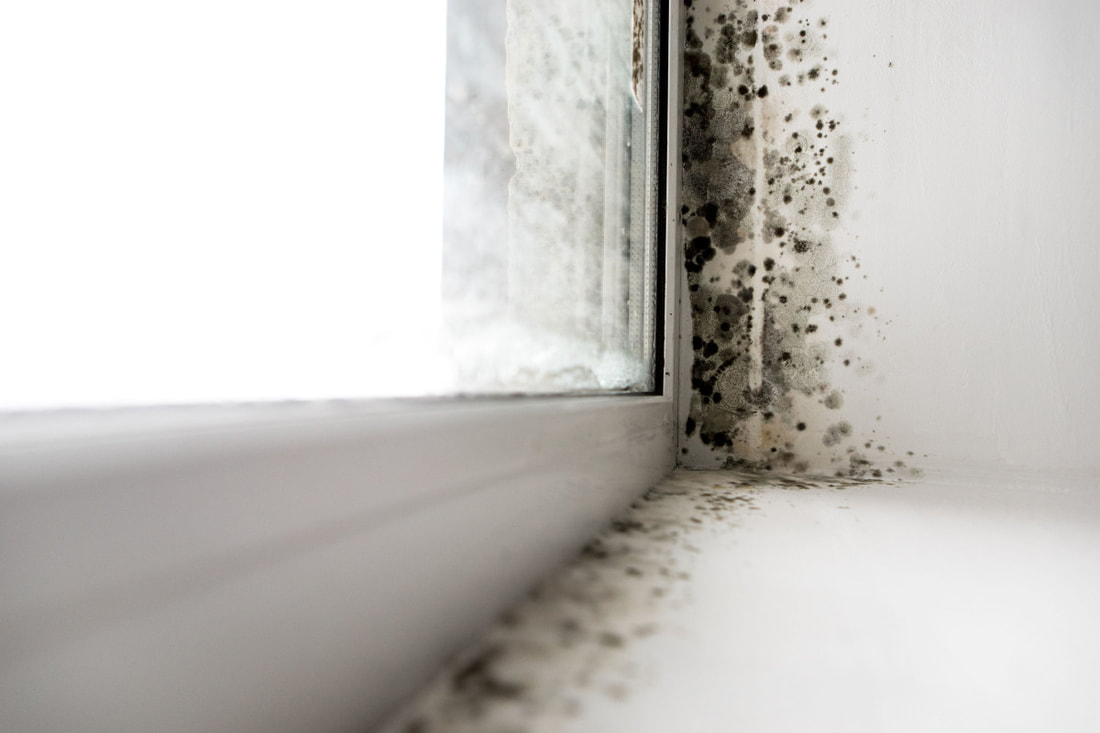
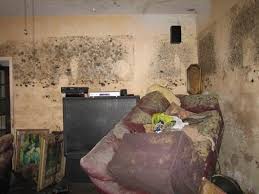
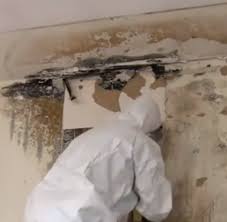
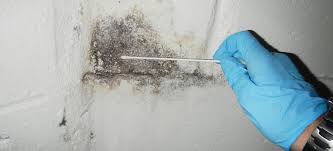

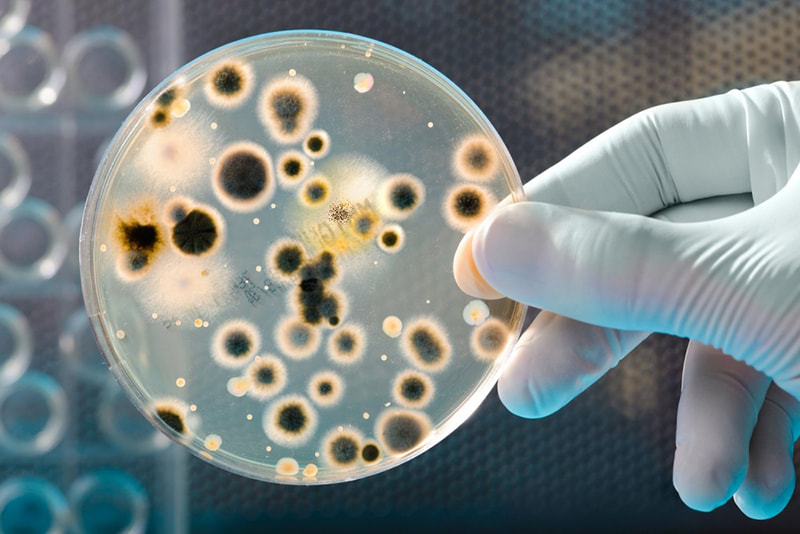


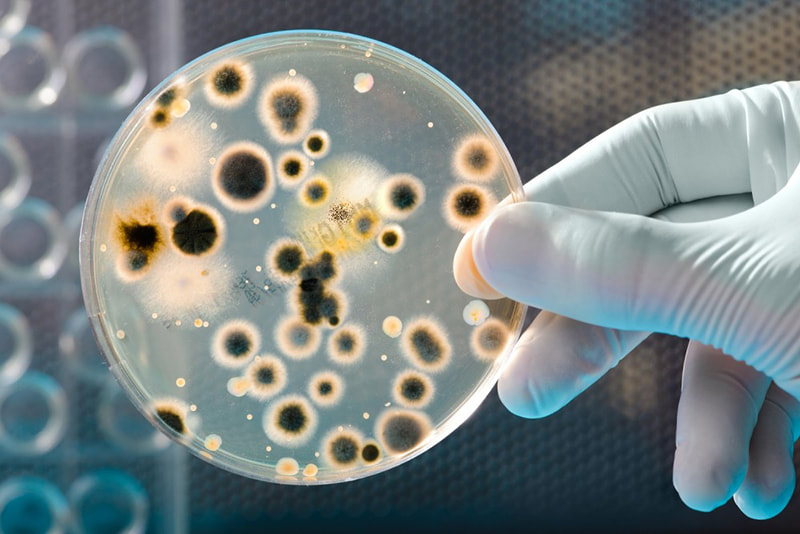
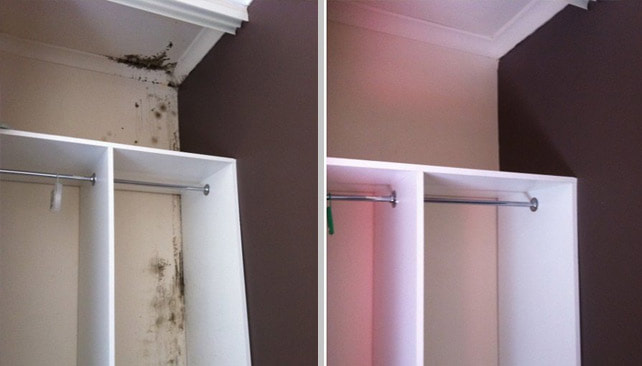
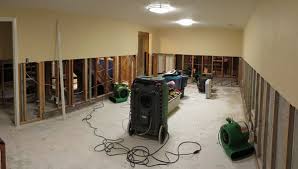
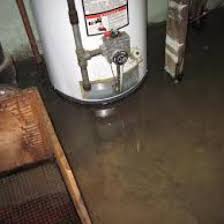
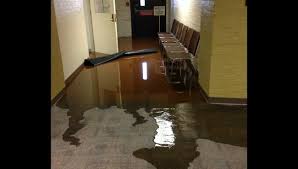

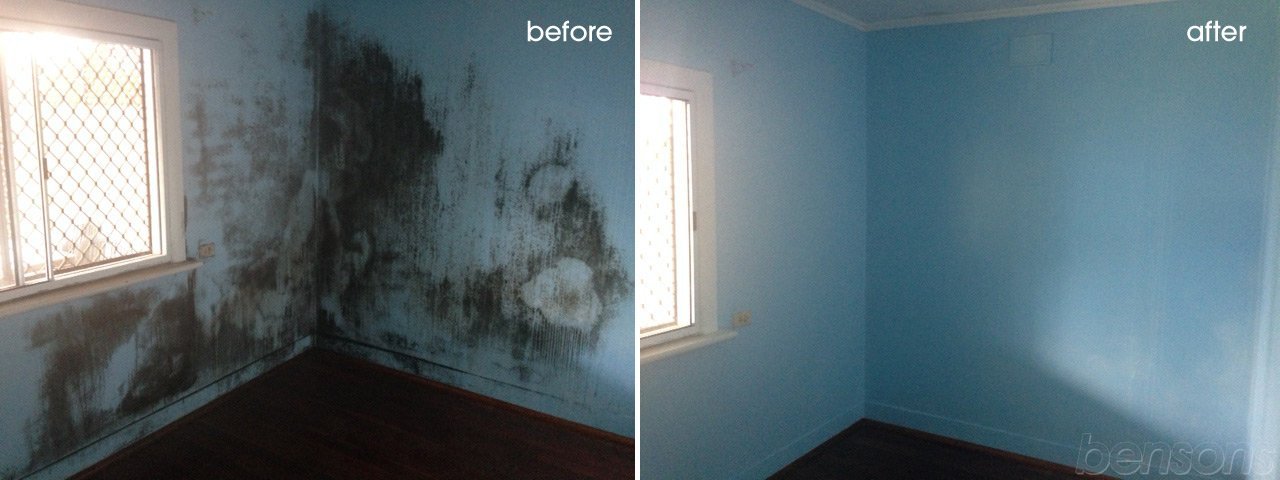
 RSS Feed
RSS Feed
